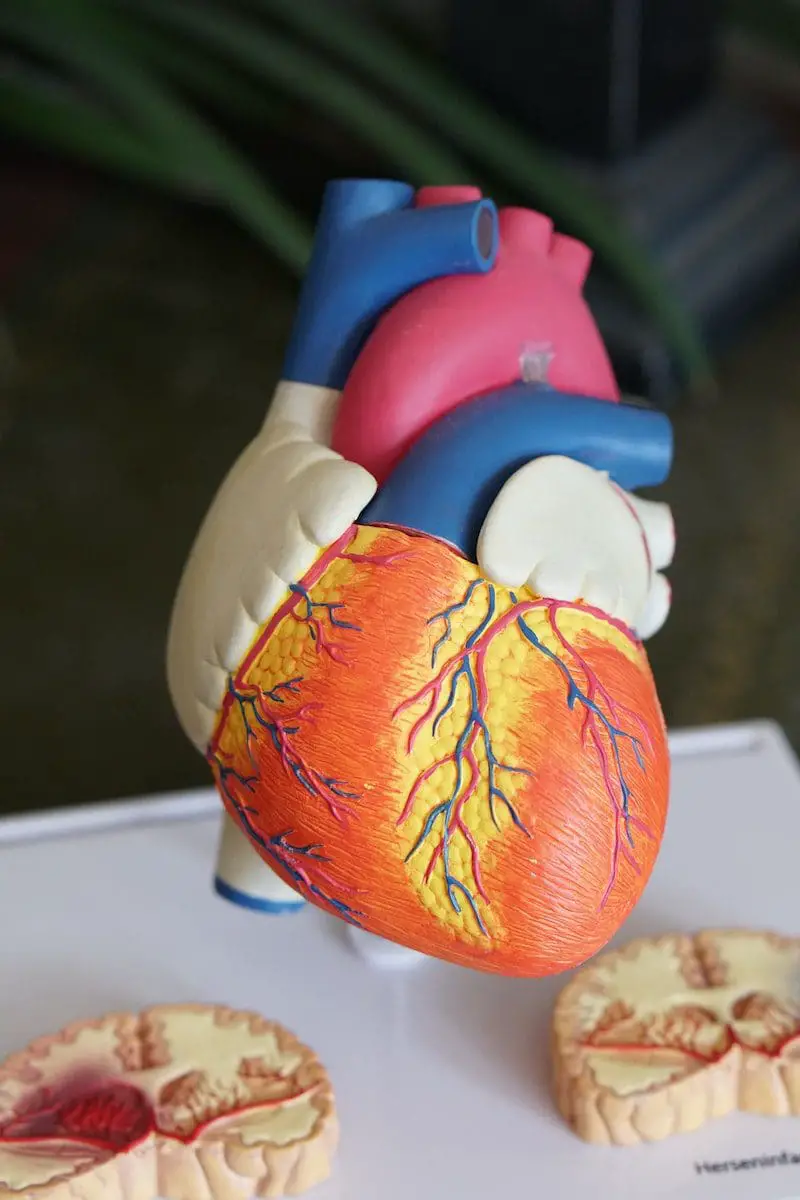The human body is very complex, and there is so much that happens to it. There are no limitations on what can happen and how it did. There are so many possibilities of anything which can happen, such as if someone gets a heart attack, there can be n number of reasons.
Aneurysms and Embolisms can be examples.
Both Aneurysm and Embolism become an obstruction to the blood flow, but there are different reasons for why they happen and what causes it.
Key Takeaways
- An aneurysm is a weakened, bulging area in a blood vessel, while an embolism is a blockage in a blood vessel caused by a foreign object.
- Aneurysms can rupture and cause life-threatening bleeding, while embolisms can lead to tissue death or organ damage due to restricted blood flow.
- Treatment for aneurysms may include surgery or medication to control blood pressure, while embolisms are managed with anticoagulants or surgical intervention.
Aneurysm vs Embolism
An aneurysm is when an artery breaks or twists, further causing bleeding, whereas an embolism blocks blood flow because of a clot. Treatment for embolism is injecting blood thinner to quickly disperse the lump, while the treatment for an aneurysm is mostly surgery or some medication.

An aneurysm is an abnormal dilatation of a blood vessel that is permanent and localized and which results in the weakening of the artery or vessel wall. It can happen due to high blood pressure, sudden trauma, or vascular disorder.
It can cause many difficulties like an upset stomach, difficulties in speaking, vision problems, etc.
Embolism does the same as an Aneurysm that is to obstructs the flow of blood, but it happens due to colts lodging in the blood vessel, which plugs the vessel. Its clots are made up of cholesterol, clomped blood cells, fats, etc.
They can damage any organ, but it mainly happens in the kidneys, brain, heart, or lungs.
Comparison Table
| Parameters of Comparison | Aneurysm | Embolism |
|---|---|---|
| Definition | A bulge or weakening of areas in the artery is known as an Aneurysm which eventually ruptures and causes internal bleeding. | A group of particles made up of fat, cholesterol, clomped blood vessels, which lodged at one place and cut the vital flow of blood. |
| Reason | It happens due to atherosclerosis, and high blood pressure causing arteries to break. | It happens due to the lodging of the particles making a clot and stopping the blood flow. |
| Treatment | It is done by sealing the ruptured blood vessels. | It is done by providing blood-thinning medicines to prevent clot build-up. |
| Causes | It stops the blood flow in the brain or heart due to the twisting or breaking of arteries. | It stops blood flow in the brain or heart due to clots. |
| Body part affected | It can happen in the brain, heart, spleen, lungs, aorta, and anywhere around the circulatory system. | It can happen in all the organs and mainly in the lungs, heart, kidneys, and brain. |
What is Aneurysm?
If one is suffering from Aneurysm, then it means they can have a bulge in the artery or the blood vessels of the wall is weak due to some reasons. There can be several reasons, such as high blood pressure and atherosclerosis, which causes the artery to become weak.
They can happen in blood vessels, but they cause in the aorta, which carries blood from the heart and is connected to the brain, and that can be fatal and serious.
The bulge in the artery can eventually burst. They can become an obstruction to the blood flow. It can cause due to sudden trauma or vascular disorder also. It causes vision problems, speaking difficulties, weakness in limbs, the upsetting of the stomach, etc.
They can be treated using treatments like endovascular coiling and surgical clipping, which both have different ways of sealing the ruptured blood vessels.

What is Embolism?
Embolism is the lodging of the flow of blood due to certain particles called an embolus. The embolus is made up do clomp blood cells, fats, and cholesterol. They can travel anywhere in the body and can damage many organs.
They can reside in one place and become a clot which can become an obstacle for blood to flow.
Their symptoms are dizziness, pain, difficulty in breathing, etc. They can be due to age and genetic problems, who as heart disease, high cholesterol fats, and high blood pressure.
There can be many types of embolism, such as brain embolism, retinal embolism, fat embolism, septic embolism, and many more.
They can be treated by medications such as anticoagulants which prevent forming blood clots, and medicines that can thin the blood from breaking the clot. Moreover, treatment such as thrombolytics can also be done to dissolve the clots.

Main Differences Between Aneurysm and Embolism
- An aneurysm is the weakening and rupturing of the artery, whereas Embolism is the making of clots made of fat, cholesterol, and clomped blood vessels.
- Aneurysm prevents the flow of blood from going into the brain or heart due to weak arteries and internal bleeding, whereas Embolism stops the flow of blood due to the lodging of clots in the vessels.
- An aneurysm is happened due to high blood pressure, smoking, atherosclerosis, etc . whereas Embolism happens due to high blood pressure, high cholesterol diets, smoking, etc.
- An aneurysm is treated by sealing the ruptured blood vessels using techniques like surgical clipping and endovascular coiling, whereas Embolism is treated by giving blood-thinning medicines, anti-coagulants, and treatments like thrombolytics which help in dissolving the build-up clots.
- An aneurysm can occur in the brain, heart, spleen, lungs, aorta, and anywhere around the circulatory system, whereas Embolism can damage all the organs but mainly happens in the kidneys, lungs, brain, and heart.

- https://www.sciencedirect.com/science/article/pii/S0735109785801091
- https://thejns.org/view/journals/j-neurosurg/53/3/article-p300.xml
Last Updated : 12 August, 2023

Piyush Yadav has spent the past 25 years working as a physicist in the local community. He is a physicist passionate about making science more accessible to our readers. He holds a BSc in Natural Sciences and Post Graduate Diploma in Environmental Science. You can read more about him on his bio page.

The comparison table effectively outlines the differences between aneurysms and embolisms, highlighting the distinct causes and impact on the body. It’s a valuable resource for individuals seeking to learn more about these conditions.
This article provides a comprehensive overview of aneurysms and embolisms, presenting detailed information about their causes, symptoms, and treatment options.
The detailed comparison of aneurysms and embolisms is a helpful reference for anyone interested in gaining a deeper understanding of these health issues.
The article offers valuable insights into the causes and effects of aneurysms and embolisms, providing a clear understanding of these complex health conditions.
Both aneurysms and embolisms can be life-threatening conditions, and it’s important to understand the differences between the two. Aneurysms are caused by a weakening of the artery walls, while embolisms are caused by a blockage in the blood vessel. Treatment for each condition varies and can include surgery or medication.
I agree, the distinction between aneurysms and embolisms is crucial in understanding their potential impact on the body.
This article offers an in-depth comparison of aneurysms and embolisms, providing detailed insights into the causes, symptoms, and treatment options for each condition.
The in-depth analysis of aneurysms and embolisms presented in this article serves as a valuable reference for understanding these complex health issues.
The detailed descriptions of aneurysms and embolisms are particularly helpful in understanding the potential impact of these conditions on the body.
The article effectively explains the differences between aneurysms and embolisms, emphasizing the importance of timely treatment and management of these conditions.
I found the detailed comparison of aneurysms and embolisms to be insightful and educational. It’s essential to recognize the distinct characteristics of each condition.
It’s interesting to learn about the different causes and treatments for aneurysms and embolisms. The comparison table provides a clear breakdown of the key differences between the two conditions.
I appreciate the detailed explanation of the causes and symptoms of aneurysms and embolisms. This article provides valuable information for understanding these conditions.
Yes, the comparison table is a helpful visual aid in understanding the distinctions between aneurysms and embolisms.
The article presents comprehensive information about aneurysms and embolisms, outlining their causes, symptoms, and treatment options. Understanding these conditions is essential for raising awareness and promoting early intervention.
I agree, raising awareness and knowledge about aneurysms and embolisms can contribute to better health outcomes and preventive measures.
The in-depth comparison of aneurysms and embolisms sheds light on their distinct characteristics and the importance of tailored treatment approaches for each condition.
The detailed descriptions and comparison of aneurysms and embolisms contribute to a comprehensive understanding of these conditions, highlighting the importance of tailored treatment approaches for each condition.
I found the article’s emphasis on the distinct characteristics of aneurysms and embolisms to be particularly informative and valuable for understanding these conditions.
The comprehensive information provided about aneurysms and embolisms can serve as a valuable resource for individuals seeking to learn more about these health conditions.
The detailed descriptions of aneurysms and embolisms help in understanding the potential impact of these conditions on the body. This article provides a comprehensive overview of these health issues.
I agree, the clarity of information presented in this article contributes to a better understanding of aneurysms and embolisms.
Aneurysms and embolisms can have serious implications on an individual’s health, and understanding their causes and treatment options is crucial. This article offers valuable insights into these conditions.
Absolutely, the information provided in this article can serve as a valuable resource for individuals seeking to understand aneurysms and embolisms.